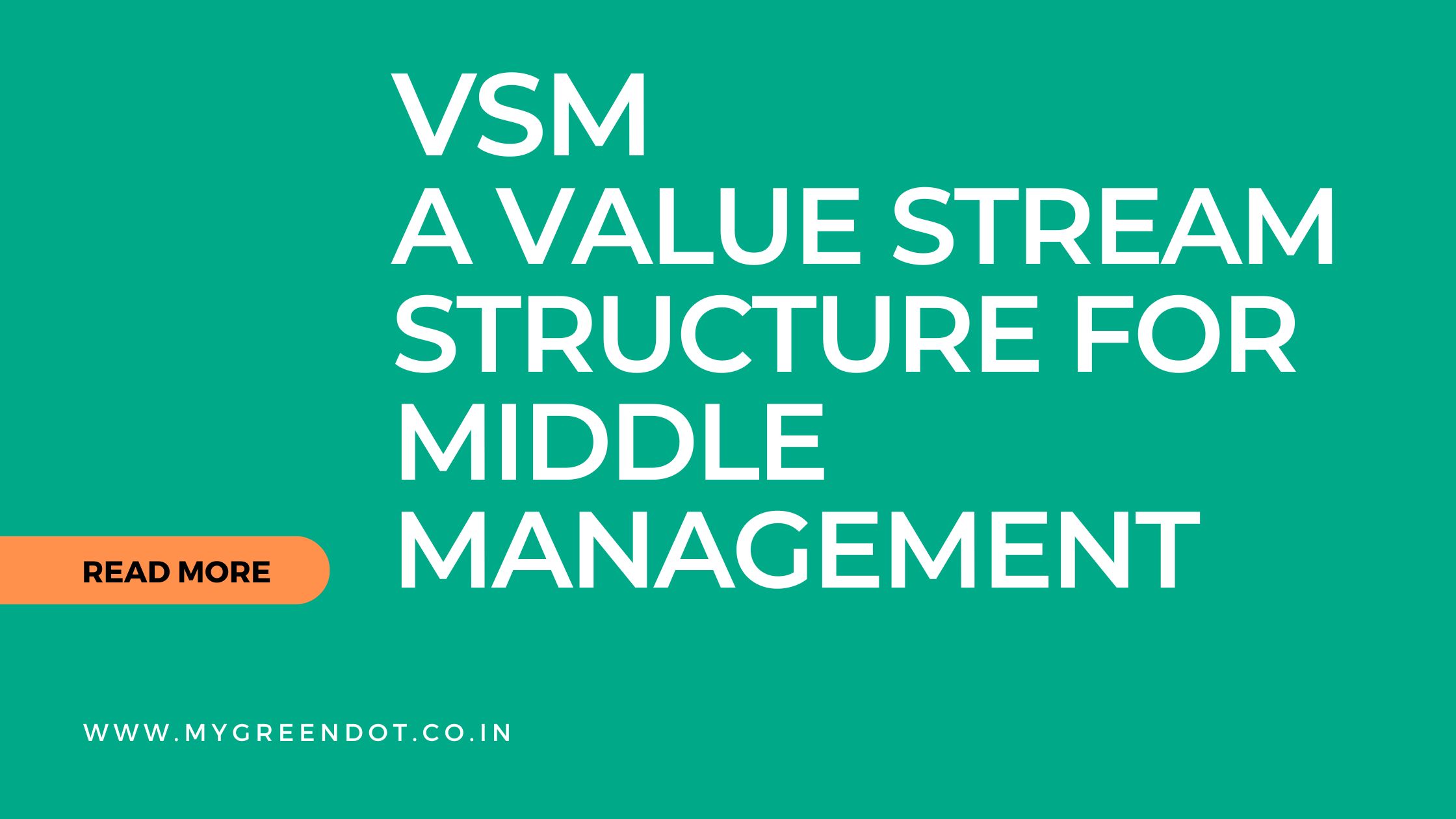In today's rapidly evolving business landscape, maintaining a competitive edge is paramount. To achieve this, organizations must continually adapt, innovate, and optimize there operations.
One approach that has gained significant traction in recent years is the adoption of a value stream organizational structure. In this article, we will delve into what a value stream organizational structure entails, it's core components, and how it can revolutionize the way businesses operate.
It is our belief at the Greendot that a value stream is the best place to start building your organizational structure.
This is because it creates a direct alignment between the needs of your customers (what you need to make), your processes (how you make them), and the roles of all employees in your organization.
In most businesses, the natural tendency will be to structure the team along process lines. That translates into employing a machine shop manager, a welding shop manager, and an assembly manager.
In the paint industry, you might have managers responsible for dispersion, mixing, quality control, colour matching, and filling; and in a packaging factory, a materials supervisor, a print supervisor, a die-cutting supervisor, and a finishing supervisor.
There is some logic in this approach, and it is perhaps unavoidable for front-line roles because the skills required for coaching a team in a machine shop are quite different from those required in an assembly cell, due to the different technologies involved.
However, as you move up the organization, you need to challenge this process-centric organization and try to organize your factory as your customer sees it—in value streams.
The problem with the process-centric structure is that once you put someone in charge of a process department, you tend to align there performance measures and there focus to that one specific department. The manager of that department has the responsibility of optimizing operations in that one specific area only.
This often puts the manager in conflict with the needs of the overall value stream. For example, the supervisor of a packaging printing department is likely to be measured on the number of sheets or meters of output from printing.
The overall output from the value stream and the fact that he might be flooding the finishing area with work-in-progress (WIP) is not his concern.
Understanding the Basics
What is a Value Stream Organizational Structure?
A value stream organizational structure is a strategic framework that prioritizes the optimization of value flow to customers. It dismantles traditional organizational silos and restructures teams and processes to align with the efficient delivery of value. This approach places a strong emphasis on efficiency, customer-centricity, and a commitment to continuous improvement.
The Key Components
To gain a comprehensive understanding of this structure, let's explore its fundamental components:
1. Value Stream Mapping
At the heart of the value stream organizational structure lies value stream mapping. This entails visually representing the end-to-end flow of activities and information necessary to deliver value to customers. By meticulously mapping out these processes, organizations can pinpoint bottlenecks, redundancies, and areas ripe for improvement.
2. Cross-Functional Teams
In a value stream structure, traditional departmental boundaries become porous as cross-functional teams take center stage. These teams comprise individuals from various departments who collaborate to streamline processes and enhance the overall customer experience.
3. Customer-Centricity
The value stream structure pivots around customer-centricity, making the customer the focal point of all decision-making processes. Each action and process is meticulously evaluated based on its impact on customer value. This customer-centric approach leads to the development of superior products and services that precisely meet customer needs.
4. Continuous Improvement
Continuous improvement is the cornerstone of the value stream structure. Teams engage in regular assessments and process refinements to eliminate waste and bolster efficiency. This iterative approach ensures that the organization remains in a state of perpetual evolution, adept at adapting to shifting market conditions.
The Benefits of a Value Stream Organizational Structure
Having grasped the core components, let's now explore the numerous advantages that a value stream organizational structure can offer businesses:
1. Enhanced Efficiency
By optimizing processes and eliminating waste, organizations can significantly enhance their efficiency. This not only leads to cost savings but also results in expedited product and service delivery to customers.
2. Improved Collaboration
Cross-functional teams foster a culture of collaboration and knowledge sharing. This synergy culminates in innovative solutions and a heightened ability to respond swiftly to challenges.
3. Elevated Customer Experiences
A relentless commitment to customer-centricity ensures that products and services are closely aligned with customer needs and preferences. This, in turn, results in elevated customer satisfaction and increased brand loyalty.
4. Data-Driven Decision Making
Value stream mapping and continuous improvement are underpinned by meticulous data analysis. This data-driven approach empowers organizations to make informed decisions and effectively track performance metrics.
5. Competitive Advantage
Organizations that embrace a value stream structure are better positioned to adapt to the ever-evolving dynamics of the market. This agility furnishes them with a substantial competitive edge.
Read more on: Lean Implementation
Implementing a Value Stream Organizational Structure
While the benefits are clear, implementing a value stream organizational structure is not devoid of challenges. Here are crucial steps to consider:
1. Leadership Commitment
Leaders must exhibit unwavering commitment to the transformation and actively champion the change. They should effectively communicate the vision, allocate necessary resources, and lead by example.
2. Training and Education
Equipping employees with the requisite skills and knowledge to thrive in a cross-functional environment is imperative. Investing in comprehensive training and education programs is paramount.
3. Pilot Programs
Commencing with pilot programs allows organizations to test the value stream structure in a controlled setting. This enables the collection of valuable feedback and facilitates necessary adjustments before scaling up.
Conclusion
In conclusion, a value stream organizational structure represents a potent approach capable of driving success and fostering innovation in today's fiercely competitive business environment. Prioritizing the delivery of value to customers, dismantling organizational silos, and nurturing a culture of continuous improvement empowers organizations to position themselves for sustained growth and excellence. Embracing this structure transcends merely following a trend; it signifies staying relevant and thriving in a dynamic marketplace. Therefore, consider the value stream structure not as a mere strategy.
Read More :
- Introduction to Lean Manufacturing: Key Concepts and Principles
- Quality Assurance
- Blue Print Of Success
- Lean


